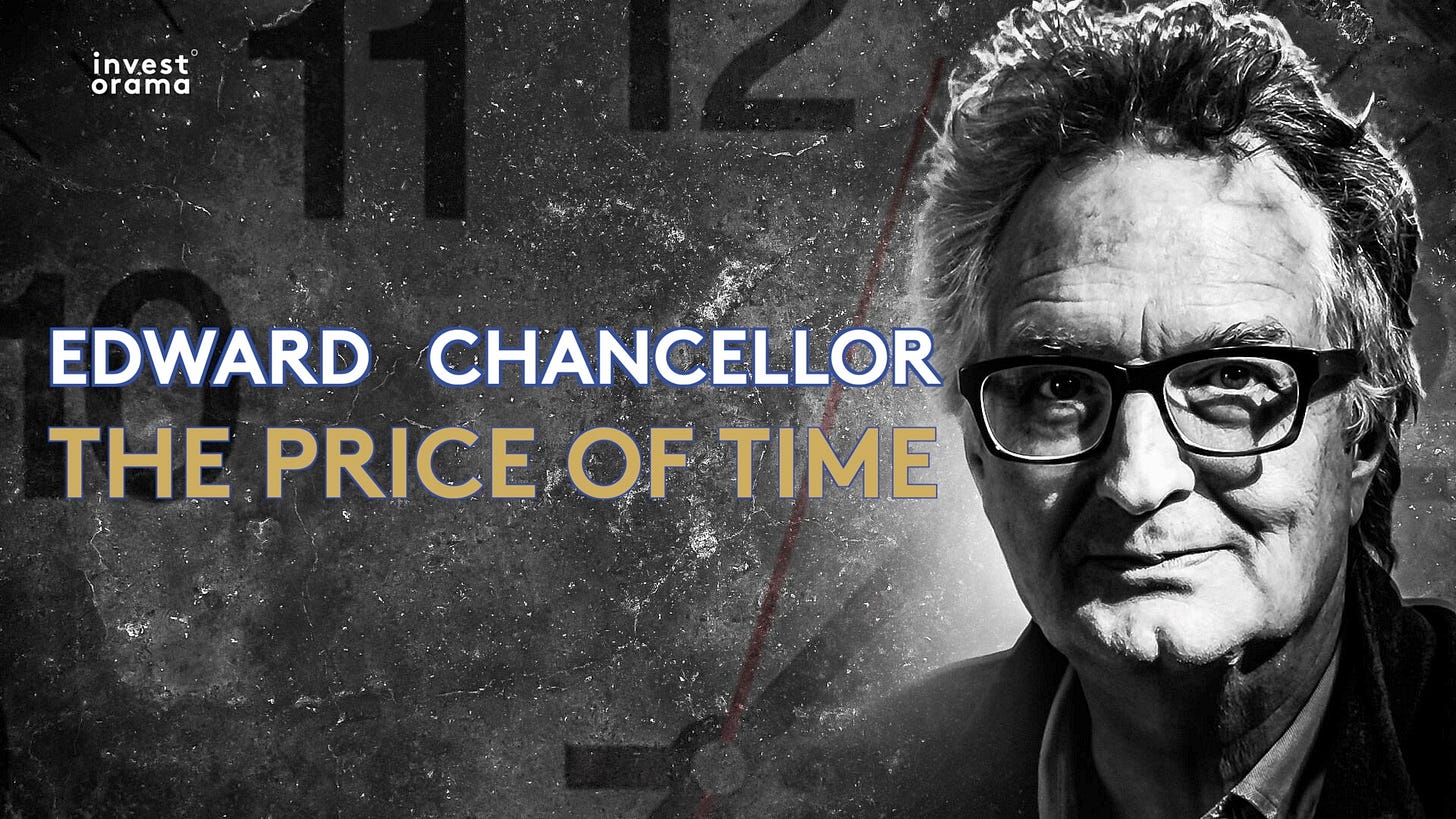🎧The Price of Time, The Real Story of Interest
The podcast is back and it's tackling the biggest topic in the investment universe right now: Interest Rates
Hi! It’s George from Investorama, your guide to the future of investing - without the hype.
I’m so stoked to start podcasting again, and I can barely believe that I get to speak with such incredible guests and share the conversation with you, starting with the author of two of my favourite books about markets: Edward Chancellor, financial historian, investment strategist and author of Devil Take Hindmost: A History of Financial Speculation and The Price of Time, The Real Story of Interest.
Our conversation focused on the book about interest rates, The Price of Time. Ιt was recorded hours before the Silicon Valley Bank collapsed… because of interest rates! The book is perfect for gaining an insightful and clearsighted understanding of the role of central banks and interest rates in financial markets.
Listen or Watch
You can listen to the episode on every podcast platform or watch it on YouTube
I will be posting clips from the conversation and notes from the book soon, but for now I just
Selected Quotes
If you know history, this late 1990s stock market looks a hell of a lot like the British Railway Mania of the 1840s. You've got a new technology. People are getting very excited about it. Very, very similar patterns. If you knew the history, you are aware of the vulnerability of the markets.
We discussed Edward’s unique career trajectory as a historian in the investment world. And although markets are more into “Quant” skills than humanities, it seems clear after our conversation that history can provide an edge in investing. Keep that in mind the next time you hear, ‘this time it’s different’.
You couldn't really understand the world unless you understood interest. And you have to bear in mind the Fed funds rate of 0% and the negative interest rates in Europe and in Japan. But those zero rates and negative rates were the lowest interest rates in five millennia of history. So that, that obviously has to be a noteworthy factor.
The book explores a natural state of interest rates, and it makes a great case that 0% or even negative rates are unnatural and have severe consequences.
If interest is an omnipresent phenomenon and the ultra-low rates wormed their way into all economic and financial activity, then it would follow that the everything bubble turns into the everything burst.
It sounds scary, and many partisans of the ‘everything bubble’ like Edward’s previous boss Jeremy Grantham of GMO, have been calling it for years, and it could be a case that they appear wrong until they are proven right. I’m not totally convinced about the ‘everything bubble’, but I think it’s also the wrong image. When we talk about bubbles, I imagine a balloon that will be pricked, but the reality is quite different (see next quote).
If you think about it, it took two and a half years for losses on subprimes to the Lehman's blowup. Everyone expects that everything happens very quickly, and after the fact, the timeline seems to be compressed. But if you're living through it, actually, it takes much longer.
I was around during the subprime crisis, and when I think of it now, it seems like it was all going fine… and then Lehman happened. But if you’ve watched the Big Short, it shows the frustrating period that people who were right early had to go through. But a movie is not the best vehicle to explain how long and slow the process must have been for the players.



